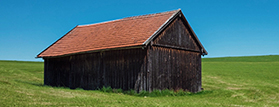On April 22, we celebrate Earth Day to remind ourselves to be grateful for our home planet. Earth Day is also about protecting the planet from pollution and deforestation by encouraging simple environmental actions such as picking up litter and planting trees.
It leaves us wondering: What would happen if there were no trees? Trees are so important to our well-being, but so often, we forget about their significance. If all the trees on planet Earth suddenly disappeared, it would be devastating to our environment.
The Negative Impact of Deforestation
Imagine a world without one tree on it. We have, of course, examples in our own solar system. Earth is the only planet in our system with trees. If you’ve ever seen footage of Mars, you may have noted how bleak and desolate the planet looks.
That’s because Mars has no trees.
Certainly, Mother Earth has her fair share of sandy deserts and desolate areas, such as Antarctica, that don’t contain any vegetation. But Earth is a forest planet in many respects‚Äîat least, it was.
Earth’s rich tree ecosystem has been quickly deteriorating since the Industrial Revolution enabled machines to advance material ‚Äúprogress.‚Äù The result? Far fewer trees on the planet.
In fact, early settlers to the United States didn’t really realize the value of the forests they ran across. In the 1800s and early 1900s, many beautiful large sequoias and redwoods were mowed down prior to our modern conservationist movement.
This led to approximately “96 percent of the original old-growth coast redwoods” being logged, according to the National Park Service. These old-growth forests were a national treasure that we cannot get back because it took hundreds and thousands of years to initially grow those trees. The world has lost 420 million hectares of forest since 1990. Agriculture and commercial business accounts for much of this loss of critical forest.
The Many Benefits of Trees
Trees offer many benefits to people and the planet. They are an important part of the ecological cycles of nature. People breathe in oxygen and breathe out carbon dioxide. Plants basically do the reverse: they take in carbon dioxide and emit oxygen. For this reason, trees should be an integral part of any climate change mitigation strategy.
Trees don’t just take CO2 out of the air. They also remove common pollutants from the air we breathe, including particle matter (such as from car exhaust) and pollutant gases, including sulfur dioxide and ammonia. If you want to filter the air in your home, houseplants or small trees can help.
Trees also perform other important ecological functions such as reducing soil erosion and providing a home for animals like birds and monkeys.
Additionally, shade from trees helps to cool things down in hot summers. City neighborhoods that do not have a lot of trees are much hotter on average than neighborhoods with trees. Loads of concrete, brick and asphalt in a neighborhood can create what is called an “urban heat island,” which can be very unpleasant in the summer. These heat islands can become deadly, especially for the elderly. For example, in Baltimore, where efforts have been made to plant trees in poor neighborhoods, a study found an eight-degree difference between the hottest and coolest “Charm City” neighborhoods, with the coolest neighborhoods boasting 10 times more trees than the hottest.
Trees also beautify an area and make it more attractive and livable. This doesn’t even account for the psychological benefits afforded by natural beauty.
In short, a world without trees would be a very miserable world indeed.
How to Take Care of Trees
Trees can often do just fine when left to their own devices. However, in the modern era, with so much pollution and issues such as depleted soil, a little tree nurturing can go a long way. First, make sure you plant the right tree for your landscape. Considerations should include the amount of sunlight, the type of soil, the room for the tree’s growth and the climate. Planting a palm tree in Michigan is simply not going to end well!
Water is especially necessary when trees are first planted. In the Baltimore nonprofit initiative to plant trees in the city, they estimated that each tree would need 20 gallons per week to get established over two years.
Fertilizer and mulch can help strengthen trees and give them the nutrition and moist soil they need for healthy growth.
Pruning is also a very important part of tree maintenance. Trimming tree branches does not harm trees. In fact, pruning properly can actually strengthen the core tree structure. Deadwood on a tree can actually cause poor tree health. It can also be a hazard, not just to power lines but to people walking by.
If you represent a government or energy company and need professional vegetation management, Townsend Tree is a respected provider of tree trimming and debris clearing. Contact us today for more information on how we can keep your energy systems up and running.
